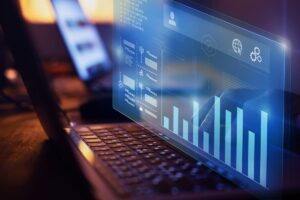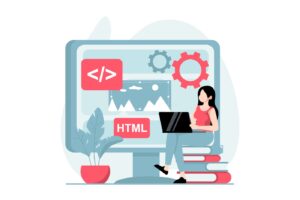Billions of data points are gathered throughout the UPS network every week. Find out how the information collected is revolutionizing the logistics giant.
In the final installment of our five-part series about UPS, TechRepublic’s Karen Roby talked with Chief Information and Engineering Officer Juan Perez and Project Manager for NPT Rob Papetti about the company’s use of big data in logistics, cloud technologies, and information security. The following is an edited transcript of their interview, which was conducted in December 2019.
Download the entire series: Inside UPS: The logistics company’s digital transformation is never-ending (free PDF)
Karen Roby: The potential for big data in the logistics industry is truly remarkable. Companies like UPS are using billions of data points to improve the overall customer experience.
Juan Perez: When you think about what’s going to happen in the future, supply chains are going to have to become even more nimble, more flexible than ever before, and you really can’t achieve that without data.
Karen Roby: Looking toward the future, Perez said the power of data is what truly excites him the most.
Juan Perez: I find it fascinating how data has truly transformed this business, and I can’t think of a better area than how our drivers today deliver packages for UPS through the use of data. The problem that we solve every single day to just simply optimize one route, it’s one of the most complex problems to solve, but we do it every single day. And now today we do all that analysis and all those optimizations before the drivers leave our facilities. Then we download a manifest onto their handheld device that tells, in essence, to the driver what is the best way to deliver that route. That’s what we do today.
In the future, which is next year, we will be doing all those optimizations dynamically, which means that, as the driver is making deliveries throughout the day, he or she will be presented with enhancements, improvements to the route so that the driver can become more efficient, continue to make all of our service commitments to our customers, and continue to be more sustainable.
SEE: 60 ways to get the most value from your big data initiatives (free PDF) (TechRepublic)
Karen Roby: From a cost and environmental perspective, it’s critical to UPS that routes are optimized in the best way possible to save miles and money. Orion is the name of the technology used to make sure the routes make sense. That system is used in conjunction with the company’s big data solution. The Network Planning Tools (NPTs) are used to best optimize the flow of volume in and outside of the hubs.
Rob Papetti: All of this automation is actually connecting to a central brain that’s making the decisions on how to move everything to the right places. Picture the network with tens of millions of packages moving in different trailers you’ve seen in the yard here, moving in and out of facilities across the country, moving in and out of airports. Understanding how each one of those packages is, where it’s loaded, where it is now, where it’s going, and where are the ones being introduced, how they can flow through the network, too, simultaneously, is what we optimize. Tens of millions moving through, millions more coming in. How do I introduce those and do it the most efficiently?
Karen Roby: Artificial intelligence and machine learning are layered into the network planning tools to make decisions regarding the best way to utilize facilities and save miles. Data is truly revolutionizing the way business works.
Juan Perez: The networks are becoming much more complex. The amount of volume, packages that we’re moving through the network, continues to grow significantly. E-commerce is driving that, and if you want to run a very efficient network, you need to use all that data. But I do believe that at some point, all that data will come into our facilities, and instead of all those monitors that you saw there, where we see the pictures of all the packages that are moving across the facility–to this date, in some cases humans are still making decisions as to whether they need to turn on or turn off a belt–at some point in time all that will be done by the machines that will, based on data, determine what is the most effective way of moving those packages throughout the facility. That’s the path that we’re taking.
SEE: Digital transformation: A guide for CXOs (TechRepublic Premium)
Karen Roby: Along that path, Perez points out how cloud technology has played a significant role.
Juan Perez: We have created, over time, our own internal cloud, which works really well for UPS. And, of course, we’re using modern technologies and supporting and managing those internal clouds supported by many partners that sell technology for all kinds of cloud providers. We have also extended into external clouds as well. Today we work and live in a hybrid cloud environment. It doesn’t mean that it will always be like that, but I think at this particular point, we have a good balance between the two.
What I have seen change is that through those cloud technologies, our IT professionals have become so much more effective at bringing technology quicker, at reacting to the needs for the business at a much faster pace, and certainly being able to enable solutions in ways that we had not been able to do before. That type of technology has made a significant difference. When I think about the smart logistics network, I also think about a cloud-enabled network.
Karen Roby: Because of digital transformation, information security is no longer an afterthought. Data protection is one of the biggest pieces of the puzzle.
Juan Perez: We’re building new technologies with the mindset that we’re going to build them in a way that the data can be private and that the information will be secured. But like anything else, this is an area that you cannot take for granted… you cannot ignore it. I have great respect for the information security professionals that we have across the organization. But like I tell people inside of UPS constantly, information security is not only the CIO’s responsibility, it’s not only the information security group’s responsibility… information security here at UPS is everyone’s responsibility.
Read our entire UPS series
Also see
” data-credit=”Image: Derek Poore/TechRepublic” rel=”noopener noreferrer nofollow”>

Image: Derek Poore/TechRepublic
Source of Article




